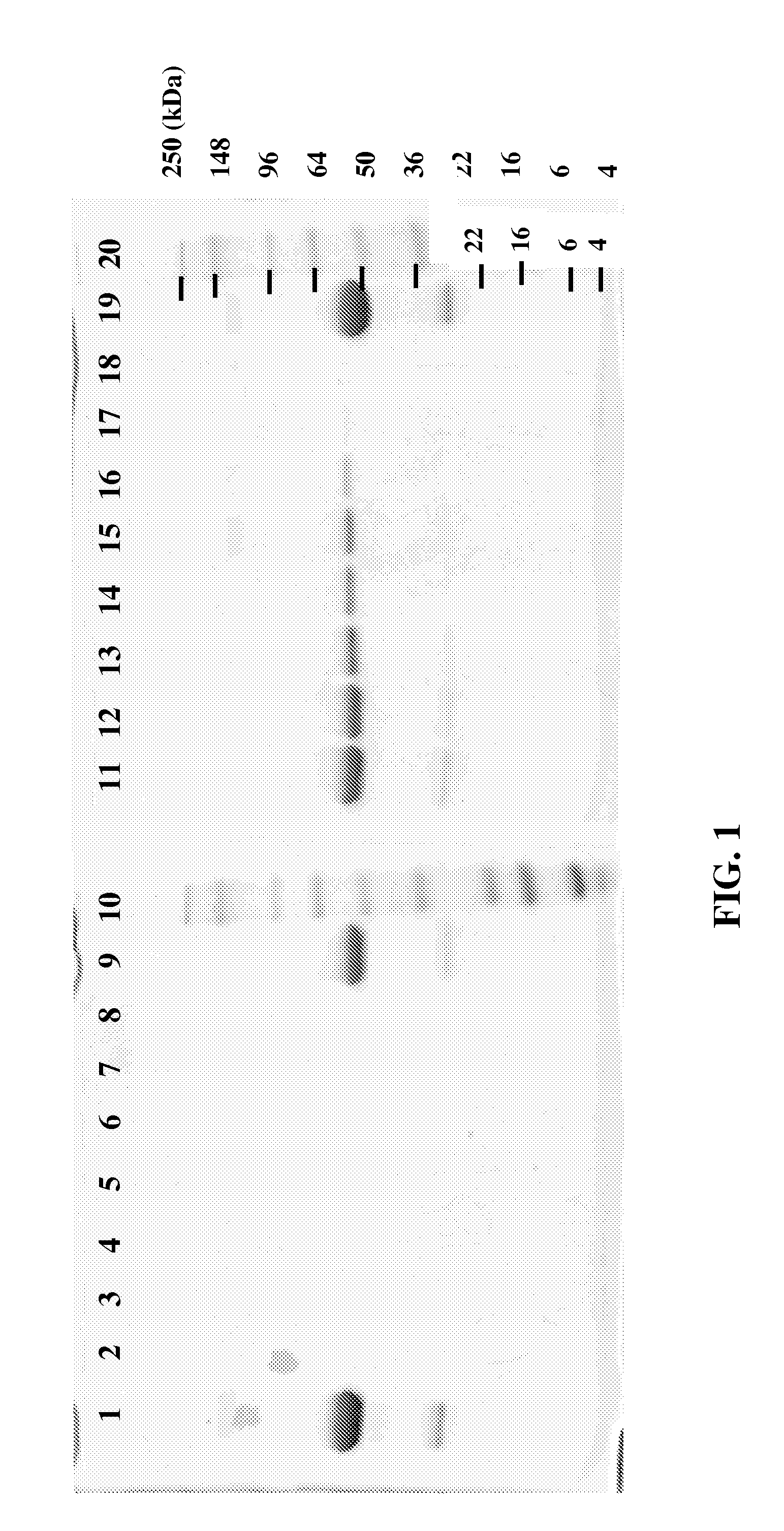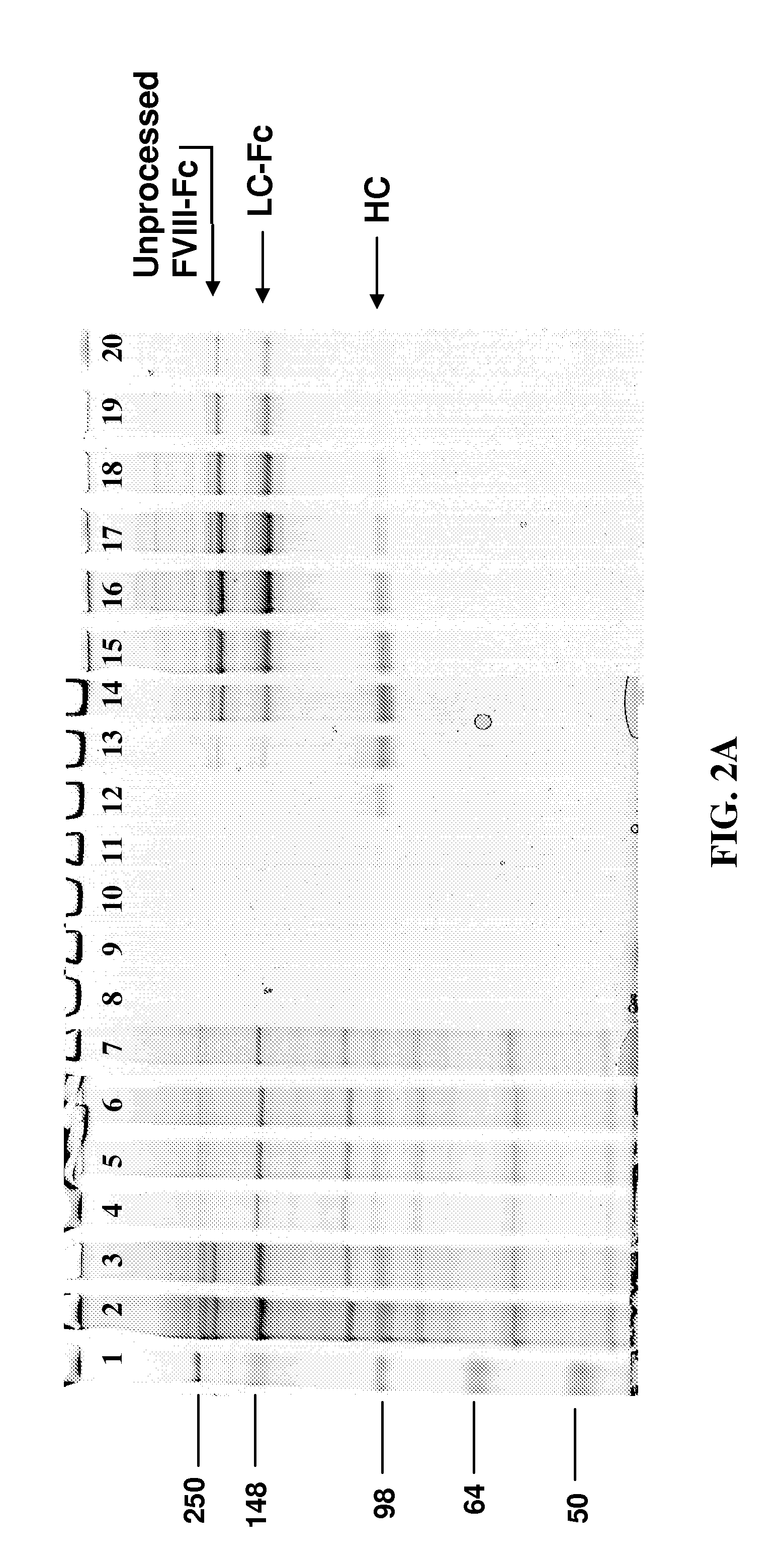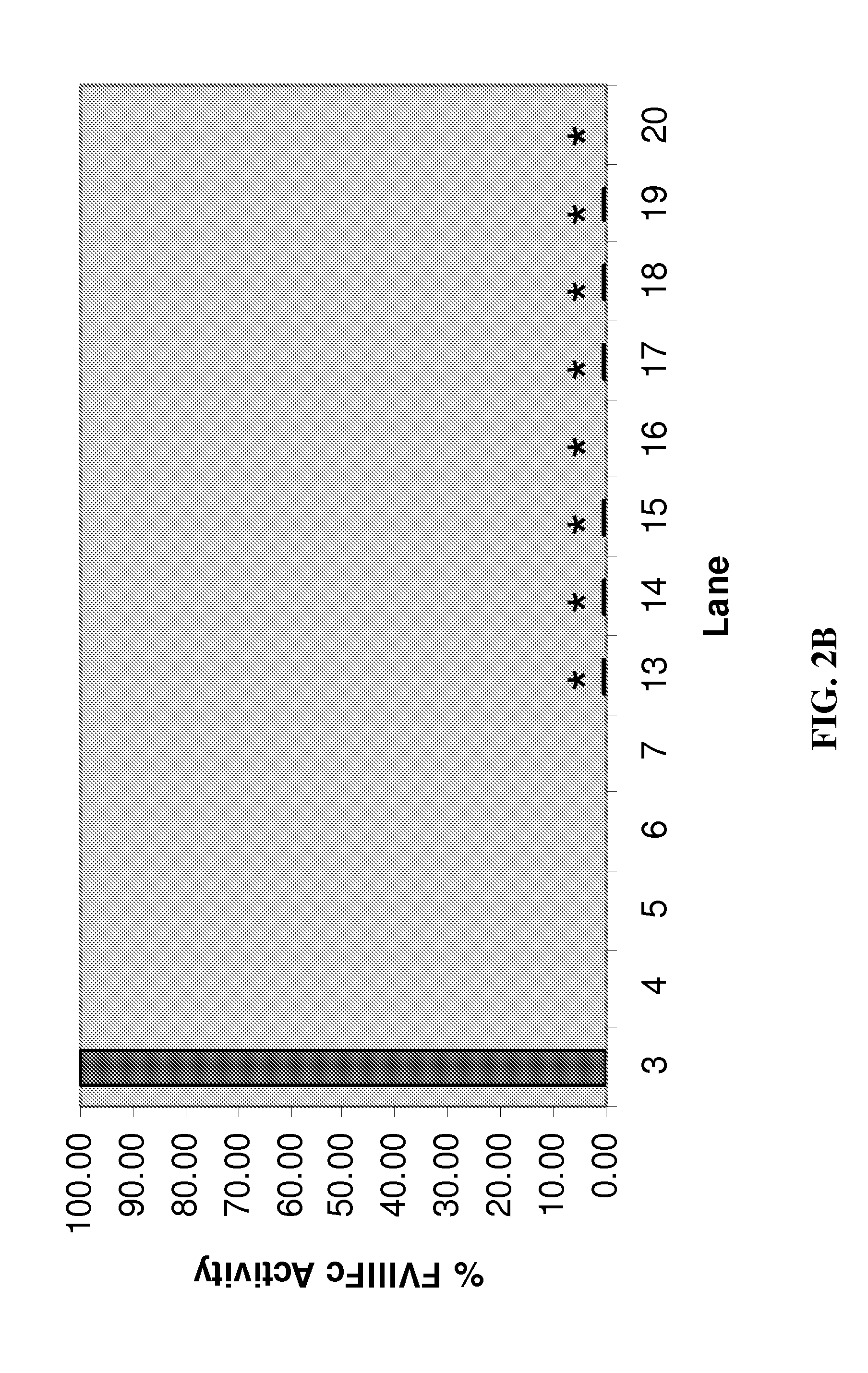Recombinant FcRn and Variants Thereof for Purification of Fc-Containing Fusion Proteins
a technology of fusion protein and fusion protein, which is applied in the field of purification of fc-containing proteins, can solve the problems of complete loss of activity of fc-containing fusion protein, and achieve the effects of facilitating attachment, facilitating binding, and improving the ability to bind to fc protein
- Summary
- Abstract
- Description
- Claims
- Application Information
AI Technical Summary
Benefits of technology
Problems solved by technology
Method used
Image
Examples
example 1
Affinity Purification of Fc-Containing Proteins Using a Soluble Neonatal Fc Receptor (sFcRn) Column
[0068]The soluble neonatal Fc Receptor (sFcRn) column can be used for the purification of Fc-containing proteins, and Fc fusion proteins from crude or partially purified media extracts. The sFcRn column is prepared by incubating sFcRn and a commercially available substrate via any number of chemical approaches. For example, covalent coupling to a support surface can be through formation of amide bonds, disulfide bonds, thioether bonds, amine bonds, ester bonds, ether bonds, urea bonds, or thiourea bonds. The sFcRn protein can also be covalently linked to a surface by carbon-carbon bond formation using chemically, photo, or thermally activated chemistry.
[0069]The resulting sFcRn-linked substrate is washed with a buffered solution at or below pH about 7.0 and poured as an affinity purification column. The sFcRn column is then equilibrated with a buffer solution at or below pH about 7.0.
[...
example 2
Capture and Release Analysis of a Purified Fc-Containing Proteins Using Soluble Human Neonatal Fc Receptor (shFcRn)
[0071]An shFcRn column can be tested for Fc binding affinity by applying a purified Fc molecule in a buffer solution at pH 6.0. After washing the column, the affinity bound Fc molecule is eluted with a buffer solution at pH 7.5.
[0072]Samples from the capture and release of a purified Fc molecule were analyzed by SDS-polyacrylamide gel electrophoresis (SDS-PAGE), as illustrated in FIG. 1. Retained fractions from elution of the purified Fc molecule from an shFcRn-SEPHAROSE™ resin column were run under non-reducing conditions on a 4-20% Tris-Glycine gradient gel. The bound Fc molecule eluted with the pH 7.5 buffer (Lanes 9, 11-18) as expected, instead of with the pH 6 buffer in the unbound column flow-thru (Lane 2) and column washes (Lanes 3-8). Lanes 1 and 19 contain a sample of pure Fc molecule, and Lanes 10 and 20 contain molecular weight markers (SEEBLUE® Plus 2, Invit...
example 3
Cloning and Expression of Single Chain Soluble Neonatal Fc Receptor (sFcRn) Proteins
[0079]To test the stability of the sFcRn molecule, single chain constructs can be made wherein the heavy chain and light chain subunits are covalently linked by an amino acid linker to form a single chain protein. The single chain constructs can be covalently linked in the heavy chain-linker-light chain orientation or in the light chain-linker-heavy chain orientation (see FIG. 4A).
[0080]Heavy Chain-Linker-Light Chain Orientation
[0081]The heavy chain-linker-light chain construct is designed to express single chain sFcRn protein in the following orientation: NT-heavy chain-(GGGGS)n linker-light chain-CT (GGGGS is SEQ ID NO: 22) wherein n can vary from one to five copies.
[0082]The heavy chain sFcRn open reading frame (ORF) was PCR-amplified using the following primer pairs: Pair A was FCRN-KPNI-BSIWI-F (ATCAGGTACCCGTACGGCCGCCACCATGGGGGTCCCGCGGCCTC (SEQ ID NO:23) and FCRN-2xLINKER-BAMHI-R (AGTCGGATCCGCCT...
PUM
| Property | Measurement | Unit |
|---|---|---|
| Fraction | aaaaa | aaaaa |
| Fraction | aaaaa | aaaaa |
| Fraction | aaaaa | aaaaa |
Abstract
Description
Claims
Application Information
 Login to View More
Login to View More - R&D
- Intellectual Property
- Life Sciences
- Materials
- Tech Scout
- Unparalleled Data Quality
- Higher Quality Content
- 60% Fewer Hallucinations
Browse by: Latest US Patents, China's latest patents, Technical Efficacy Thesaurus, Application Domain, Technology Topic, Popular Technical Reports.
© 2025 PatSnap. All rights reserved.Legal|Privacy policy|Modern Slavery Act Transparency Statement|Sitemap|About US| Contact US: help@patsnap.com



